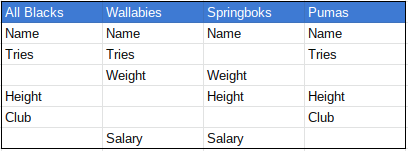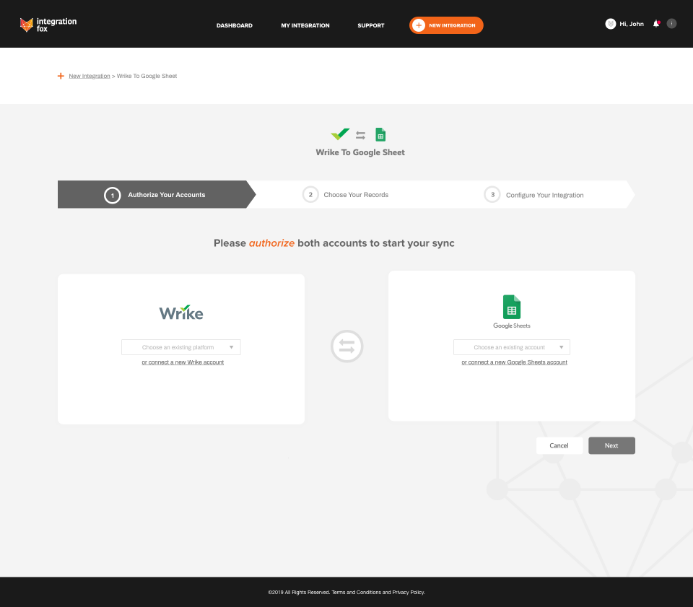In today's digital world, data is being created in more voluminous amounts than ever before. The challenges that businesses face off the back off this is that their data is being created and stored in a handful of locations that don't translate and speak to each other, meaning it's harder for them to make informed decisions because nothing is consolidated in one place.
So, how do we fix this problem and get our data talking and stored in one unified warehouse? Here, we expand of the process of data mapping and its benefits.
What is Data Mapping?
At its core, data mapping takes one set or multiple sets of data from a location and 'maps' it to another output location. By matching data fields from different sources into a centralised database, data mapping will allow you to migrate, process, and manage data more effectively. Consolidating data this way helps to produce relevant and accurate insights, empowering companies to make better and more informed business decisions.
Data mapping is a standard practice for businesses and can be very simple when there are fewer variables and fields to match, but as the amount of data a business collects and needs to consolidate, the more difficult the process can become.
How Does it Work?
To get a clear picture of how data mapping works, let's take a look at a very basic, simplified version of the process.
Below, are the four teams of a rugby competition, 'The Rugby Championship.' What we notice is that each team has both similar and variable types of information.

To compare these stats, rather than looking in their respective sources, consolidating them into one centralised place would provide a unified, quick view that is invaluable to businesses.
In order to bring all these together, we need to create a map that matches all fields that need to be consolidated. Below is an example of what a map might look like once it's had all the correct fields connected, creating a single database.
.png?width=408&name=Untitled%20design%20(11).png)
Now, this is a very simple data mapping process as the data being mapped was extremely surface level, but mapping becomes even more difficult and complicated depending on the different factors and variables. Like the following:
- Amount of data
- The number of datasets being combined
- The number of information sources getting mapped
- The number of schemas in the data sources
- The differences between the source data structure and the target structure
- The hierarchy of the data
Why is Data Mapping Necessary?
For a business that processes data, data mapping is essential. You can't migrate or integrate data, build data warehouses, or transform data without effective and successful data mapping.
If data mapping is being undertaken, poorly mapped data is your worst friend. If the right data management steps haven't been taken, data can flow to different endpoints, creating more confusion and work in the long run. Mapping is the first and most important step to take when dealing with data.
How To Map Data
If you have a significant amount of data to process, mapping this may appear like an intimidating job, and in certain situations, you would be right - but the earlier you get a sound solution in place early, the better. Whether you're at the start of your data's life cycle or you need to migrate a massive amount from platform-to-platform, these are the steps to get your map underway.
1. Define the data
Knowing exactly what data you need and don't need to migrate is paramount. Don't waste your time mapping data that is redundant. Run through all your data sources and start to figure out what is needed.
2. Start Mapping
Start by identifying all the data that needs to be mapped and the target destinations and then start connecting all the fields up.
3. Lay Down the Rules
By setting rules, your map will know what to do when it encounters things like duplicates or conflicting data.
4. Test
Make sure your map runs smoothly and effectively. Start by running a small test to see if your map works as intended and address and road bumps along the way.
Once your map is working and you're satisfied with the outcomes, you can implement it with the rest of the data that needs migrating. Remember, it's not a one-off job. A data map needs to be monitored and maintained. New data is always being created and there will always be variations of old data, so keeping on top of your map to make sure it's running smoothly is key.
Techniques
-
Manual
For one-off or small jobs, this could be the solution. Manual maps requires developers to code the map and all its connections from source to destination. But, for most cases, this isn't viable or cost effective.
Due to the massive amounts of data stored in different locations, it's becoming increasingly hard to rely on manual methods for data mapping. The bigger the operation, the bigger the map, the bigger the complications.
This is where automation comes in.
-
Automated
To help seamlessly migrate data, fully automated data mapping tools have made it even easier for businesses to manage and visualise their process. Available in a user-friendly UI, users can easily map each stage of the process from start to finish with ease. Most feature out-of-the-box integrations that allow you to manage the automatic mapping of a range of different formats like Google Sheets, Hubspot, Salesforce and more. But the best thing about automated mapping platforms? You don't have to be a coder to use them. They're perfect for non-coders and novice users to operate.
Where Integration Fox Fits In
Integration Fox's robust data mapping functionality will help you get yours sorted in no time. With a no-code functionality, novice users will be able to complete complex data mapping tasks through our intuitive and easy-to-use dashboard.
Integration Fox offers a cost-effective, out-of-the-box software that is simple and intuitive to use. Integration Fox is a secure, scalable, and robust way to get your software platforms talking effortlessly and in real-time - without needing a developer.
If you're interested in finding out more, get in touch. We'd love to hear from you and let you know how we can solve your data mapping issues.







